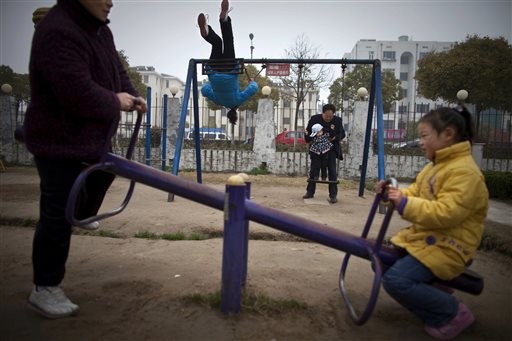More than 55 percent of Chinese now live in urban areas
Change Size
 Chinese grandparents and grandchildren play in a park in Dafeng, in east China's Jiangsu province, April 5, 2010. (AP/Alexander F. Yuan)
Chinese grandparents and grandchildren play in a park in Dafeng, in east China's Jiangsu province, April 5, 2010. (AP/Alexander F. Yuan)
C
hina is increasingly becoming a nation of town and city dwellers, with more than 55 percent now living in urban areas, the government said Thursday.
China's transformation to a predominantly urban society is key to realizing the government's goals of boosting consumption and raising living standards amid slowing economic growth.
China's vast countryside has lagged far behind urban areas in income growth, public services and job creation, prompting millions of Chinese to move to the cities. With public services in major urban areas such as Beijing, Shanghai and Guangzhou now strained almost to the limit, China is attempting to steer urban growth toward smaller cities with more space to expand.
According to the website of the National Bureau of Statistics, 55.88 percent of the population was urban in 2015, standing at 767.5 million out of a total estimated population of 1.373 billion. As recently as 2010, just 49.68 percent of the population lived in cities and towns, the bureau said.
While the overall population has grown by a relatively small 40 million in the past five years, the proportion aged 59 or under has fallen slightly while the percentage of those 60 or over has grown by 2.89 percent to make up 16.15 percent of the population. That is slightly smaller than the 16.52 percent of the population aged 14 or under.
That aging trend is set to continue as China's population heads toward its estimated peak of 1.45 billion sometime around 2050, by which time the United Nations estimates the world's population will reach 9.6 billion.
The bureau's data also showed that China already has 34 million more men than women, a gap that's expected to widen as a result of the traditional preference for male children and the aborting of female fetuses.









